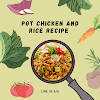1. The Fundamentals of Chicken Anatomy
Drawings need to be precise and realistic, which requires knowledge of a chicken's anatomy.
An in-depth discussion of the body parts of a chicken, including its shape, wings, legs, and tail, will be provided in this article.
By dissecting the form of a chicken into straightforward and controllable parts, it will describe the proportions and fundamental shapes that make up its physical appearance.
Readers will feel more comfortable sketching a chicken's general structure once they have a firm grasp of these fundamentals.
2. Feathers: An Understanding.
The appearance of a chicken is greatly influenced by its feathers.
We will examine the various feather types and patterns that can be seen in various breeds of animals in this article.
We'll talk about how to depict feather texture and details in drawings, from downy fluffy feathers to intricate plumage.
Step-by-step instructions and examples will be provided for the methods of making realistic feather impressions, such as cross-hatching and stippling.
3. Creating a silhouette of a chicken.
To truly convey the essence of a chicken, a precise silhouette must be made. This article will walk readers through the process of sketching various chicken poses, highlighting the significance of studying reference images and comprehending body language. Readers can master the art of capturing the distinctive shape and posture of a chicken with the help of step-by-step instructions and visual aids.
4. Eyes and Beak with Expression.
An animal's personality and emotions can best be expressed through its eyes and beak. Intricate details of a chicken's eyes and beak—from their size and shape to their texture and color—will be the main focus of this article. Readers will pick up tips on how to draw eyes that look realistic, highlight catchlights, and give the beak depth. There will also be advice on how to give their chicken drawings emotions and personality.
5. Taking on Plumage Patterns.
This article will look at ways to easily deal with the wide variety of plumage patterns that various chicken breeds exhibit. Without being overwhelmed by complex details, readers will learn about simplified methods of depicting feathers. Their drawings of chickens will stand out because they will be guided step-by-step through the process of making visually appealing plumage patterns.
6. Adding Volume and Depth
Understanding shading techniques is crucial to creating drawings of chickens that are truly lifelike. The various shading methods that give drawings depth and volume will be covered in this article. To produce a three-dimensional effect, readers will learn how to assess light sources, choose where to cast shadows and apply to shade. Readers can improve their shading abilities and give their drawings of chickens' life with the help of useful exercises and examples.
7. Using techniques for color and texture.
Colored pencils, watercolors, and digital tools will all be covered in this article as coloring techniques that work well for chicken illustrations. With the help of different color application techniques like layering, blending, and stippling, readers will learn how to mimic the texture of feathers. There will be advice on how to choose color schemes that are realistic and produce vibrant effects.
8. Compositions and backgrounds.
The significance of backgrounds in enhancing chicken drawings will be revealed to readers in this article. We will discuss various background options, such as rural settings, natural farm settings, or straightforward complementary backdrops. To assist readers in creating visually appealing and balanced compositions for their chicken illustrations, composition techniques like the rule of thirds, leading lines, and focal points will be discussed.
9. Adopting Imperfections
Accepting flaws and learning from errors are frequent components of artistic development. In this article, we'll examine the creative person's mindset and offer tips for overcoming self-doubt and frustration. In their artistic endeavors, readers will be inspired to adopt a resilient mindset and to see mistakes as learning opportunities. There will be advice on how to deal with obstacles head-on and maintain motivation.
10. Putting on Display Your Birdie Art.
The last article teaches readers about various venues and chances to exhibit their chicken drawings. We'll talk about ways to promote their artwork, such as posting on social media or taking part in art competitions or exhibitions. Readers will gain confidence to confidently share their feathered masterpieces with the world by learning effective photography and scanning techniques as well as professional presentation techniques.







0 Comments